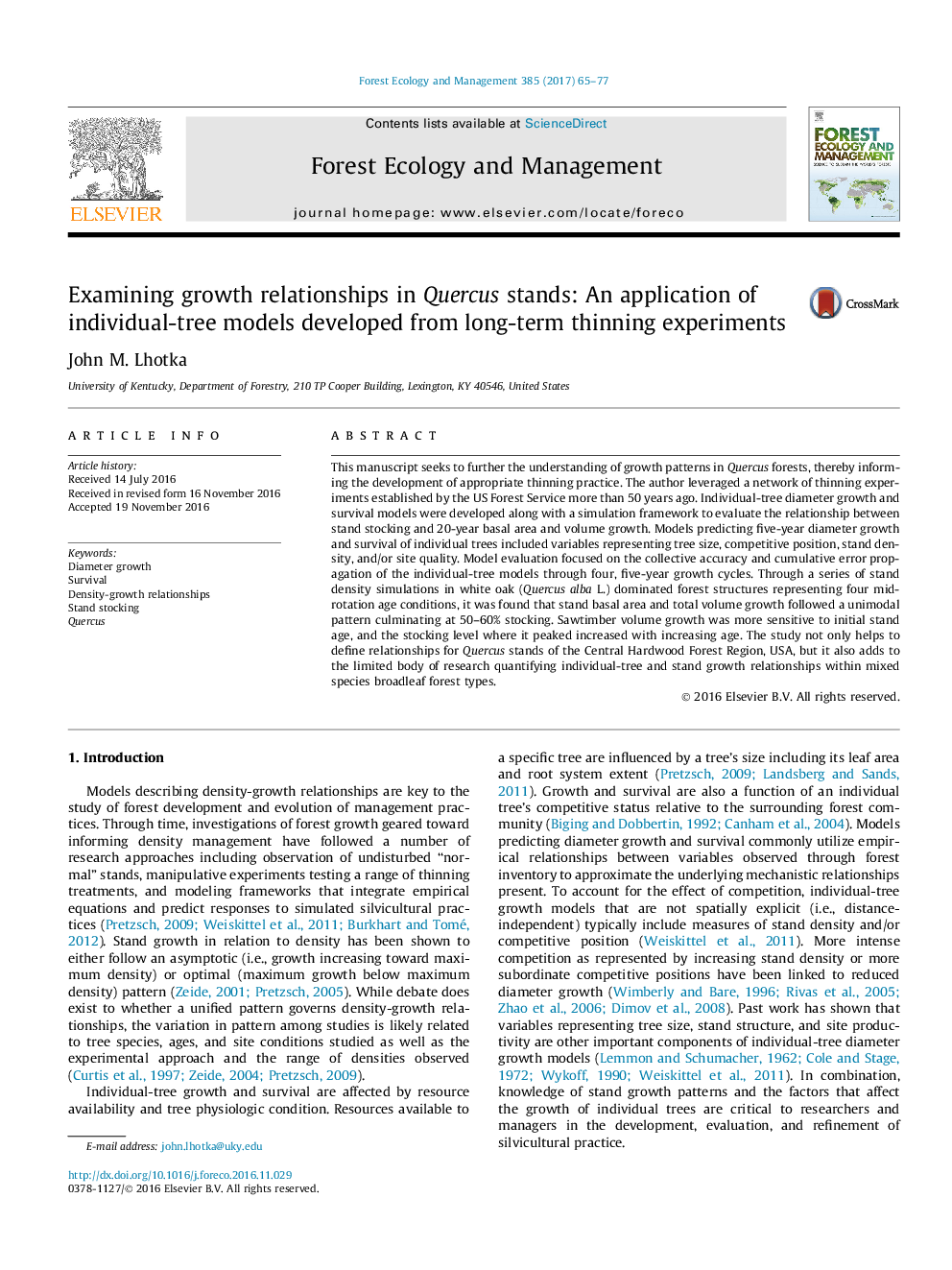| Article ID | Journal | Published Year | Pages | File Type |
|---|---|---|---|---|
| 4759566 | Forest Ecology and Management | 2017 | 13 Pages |
Abstract
This manuscript seeks to further the understanding of growth patterns in Quercus forests, thereby informing the development of appropriate thinning practice. The author leveraged a network of thinning experiments established by the US Forest Service more than 50Â years ago. Individual-tree diameter growth and survival models were developed along with a simulation framework to evaluate the relationship between stand stocking and 20-year basal area and volume growth. Models predicting five-year diameter growth and survival of individual trees included variables representing tree size, competitive position, stand density, and/or site quality. Model evaluation focused on the collective accuracy and cumulative error propagation of the individual-tree models through four, five-year growth cycles. Through a series of stand density simulations in white oak (Quercus alba L.) dominated forest structures representing four mid-rotation age conditions, it was found that stand basal area and total volume growth followed a unimodal pattern culminating at 50-60% stocking. Sawtimber volume growth was more sensitive to initial stand age, and the stocking level where it peaked increased with increasing age. The study not only helps to define relationships for Quercus stands of the Central Hardwood Forest Region, USA, but it also adds to the limited body of research quantifying individual-tree and stand growth relationships within mixed species broadleaf forest types.
Keywords
Related Topics
Life Sciences
Agricultural and Biological Sciences
Ecology, Evolution, Behavior and Systematics
Authors
John M. Lhotka,
